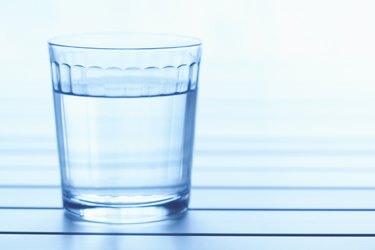
PH measurements compare relative concentrations of hydrogen (H) atoms in liquids, determining if they are acid or alkaline on a 0 to 14 scale. Freshly distilled, pure water is in the middle, at 7 on the pH scale; battery acid is extremely acidic, measuring less than 0; and household lye is extremely alkaline, at almost 14. The normal pH of healthy drinking water varies depending on the geology of its source and other factors. But low pH (acidic) well water tends to corrode or leach any metal it contacts, leading to plumbing damage, unsightly stains, metallic taste and sometimes health problems. There are various treatment approaches and systems.
How to Correct Low PH in Well Water
Video of the Day
Step 1
Do some research. Home pH testing kits are inexpensive and accurate, determining degrees of acidic and alkaline pH by color. More sophisticated water testing will tell you more about your water, of course. Ask your public health department if there are well-water contaminants you should be testing for--good information to have before you consider water treatment options--and decide whether professional testing is warranted.
Video of the Day
Step 2
Contact two or three reputable water treatment companies, to learn more about water treatment options and to compare the costs, benefits and drawbacks of various systems. Mechanical or neutralizing water filters that raise pH (lower acidity) "harden" water with calcite, calcium carbonate or magnesium oxide. These filters need to be backwashed regularly to clear solid particles; the neutralizing substance also needs to be replenished.
Step 3
One option, usually for larger water systems, is to inject a solution of soda ash or potassium into the water supply with a chemical pump. Because too much potassium can cause health problems, including cardiac arrest, potassium levels in the water need to be monitored.
Step 4
Assess all options based on your own circumstances. For example, should water be filtered at the well or before entering the house? Buy accordingly.